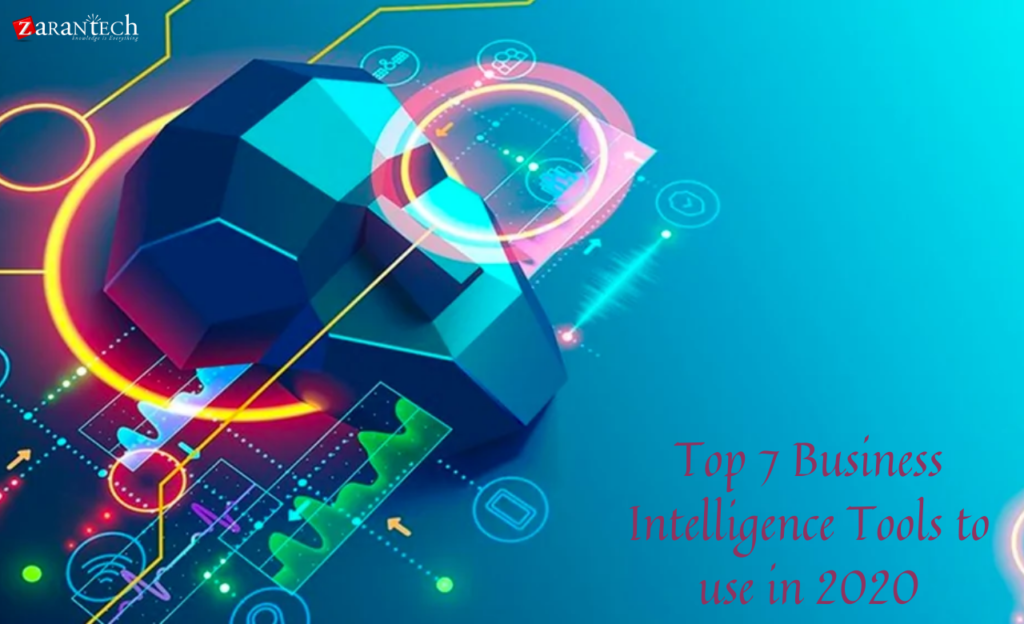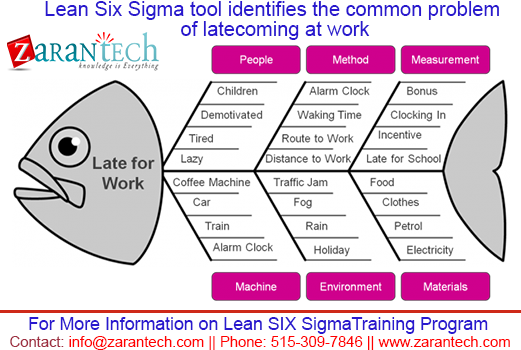Top 7 Business Intelligence Tools to use in 2020
Category: General Posted:Jun 05, 2020 By: Ashley Morrison
This blog article intends to give you an understanding of the top Business Intelligence (BI) tools list. Here, you will get a good understanding of what BI tools are, along with an introduction to various BI tools examples. Additionally, you will learn various features of these tools, which will help you make BI tool comparison and figure out which tool you should learn to go after a successful career in this Domain.
According to Forbes, Business Intelligence Analysts rank at 9 in the list of the highest possible paying jobs for professionals. This is just one of the reasons it is a sought-after job profile.
This blog on ‘Best BI Tools & Softwares, Top Business Intelligence Tools of 2020’ provides details relating to a variety of BI tools for you to understand and compare. You can choose as well as find out the tool that best suits you and boost your career. To excel in BI and make an effective career in it, you need to learn and gain experience in at least one BI tool. If you are aiming to pursue a career as a Business Analyst, then sign up for among the most prominent Business Intelligence Courses and get all the necessary skills to become one.
What is Business Intelligence Tools?
A Business Intelligence tool is application software that gathers and processes a large quantity of data from both internal and external business sources such as journals, books, files, documents, emails, images, videos, and so on. Although these tools might not be as adaptable as business Analytics tools, they offer various methods of processing the data to obtain information using queries. Besides, these tools allow BI professionals to prepare the given data before examining it to develop Dashboards, Reports, and Data Visualizations.
This leads to an outcome that provides all the employees of an organization the power to make improved decisions, determine upcoming potentials for revenue, identify the latest opportunities for development, increase business efficiency, interpret market trends, and more.
Let’s now understand why these tools are necessary, after that we will learn about the different types of Business Intelligence tools.
Why are BI tools Used?
Generally, BI tools are used for query and creating reports on data, but they can also combine a large set of applications for the analysis of data. These applications might consist of enterprise reporting, real-time BI, mobile BI, Online Analytical Processing(OLAP), operational BI, open-source BI, ad hoc, etc. Besides, they include software for Data Visualization using numerous tools and charts to create performance scorecards and dashboards, displaying KPIs and business metrics. Further, these easy-to-understand visualizations allow specialists to draw out the appropriate data to life and make sense from it.
Here is a list of a few of the top BI tools examples that are used often and in a wide range in the most leading organizations today.
Tableau
Tableau is just one of the most popular and simple Microsoft BI tools utilized in companies today. A much-in-demand platform of BI, Tableau is amongst the top in the best BI tools checklist. This integrated tool enables even non-technical users to easily build personalized reports and dashboards to gain useful details. Even more, it provides a varied range of graphical representations that are very interactive and pleasing. This tool mostly offers two features, the collection of data and data analysis. It collects data from numerous sources such as spreadsheets and cloud applications. This Business Intelligence Software Application is utilized in many industries and business sectors, including banking, manufacturing, education, sales, telecommunication, and more.
Features:
- You can share dashboards and tools to execute group analysis on any kind of given dataset.
- You have the choice to select between 2 versions, the 32-bit version, and the 64-bit version.
- It has a feature to automatically update data, which allows the company to get the latest data and extract beneficial data from it in real-time.
- You can deploy the tool either on a local server or on the cloud server.
Boost your skills in Tableau by clicking here
Datapine
Datapine is another generally used BI software that is easy-to-use yet effective. This tool allows both professionals like Data Analysts and non-technical professionals to analyze, explore, and visualize data from numerous data sources. Furthermore, it assists you to accumulate the data from these sources and evaluate it using advanced analytical and predictive features.
Features:
- It contains easy as well as rapid data connectors that integrate the required data sources in a matter of a few secs.
- You can utilize its one-of-a-kind drag-and-drop feature to create appealing data visualizations in a few clicks, providing a user-friendly interface.
- It additionally includes sophisticated dashboards with interactive modern features.
- There are at least 80 predefined dashboard templates dealing with various industries.
Sisense
The major function of the BI tool, Sisense, is to gather, analyze as well as visualize datasets, irrespective of their size. It is just one of the most often utilized dashboard BI tools with an intuitive attribute that offers an easy to use drag-and-drop interface, allowing any person to use and understand it, including those who are not from an IT background.
In Sisense, you need to gather and store data in a singular database that can be accessed for visualization and reporting functions. Furthermore, you can use the data to build dashboards with various visualization as well as analytical tools offered by the software. In addition, you can share reports and dashboards with your team member or various other departments within the organization, as well as outside. This allows enterprises to examine numerous patterns and build informed organization techniques for improvement.
Features:
- Its interactive, as well as easy to use dashboard, provides drag-and-drop functions, along with easily accessible tools.
- Since the data is systematized here, the moment taken for data processing is minimal.
- It offers attractive visualizations.
- You can use this tool to work on all sizes of datasets without difficulties.
- This tool also contains the ETL facility, report, and query writer, data warehouses, as well as customized dashboards.
Yellowfin BI
Yellowfin BI, among the best BI tools, is used as an end-to-end analytics platform, incorporating Machine Learning and data visualization. You can filter tons of data through user-friendly filtering system features such as radio buttons as well as checkboxes. Besides, its mobile accessibility feature and flexibility enables you to make use of, monitor, and understand the dashboard from anywhere.
Features:
- You can easily access the dashboard from anywhere including the Wiki, the company intranet, mobile devices, or the website.
- Features like mapping mobile BI aid you to access and monitor the organizational data.
- It permits you to make smarter and faster collective decisions.
- It offers interactive reports and data-rich presentations that can make your insights more efficient as well as effective.
Power BI
Microsoft Power BI is among the widely-used open-source BI tools that provide an environment for the analysis, integration, and visualization of data. This tool is effective and efficient in aiding organizations to make informed organization decisions.
Features:
- Even non-technical users can easily use it.
- It utilizes the Power Pivot to perform analytical operations, and it is easy to learn unlike the command language of Excel.
- Its Power Inquiry feature permits you to load data automatically even from a very old database for the report making.
- You can also utilize this software to share reports for free.
Want to be Benefitted in Microsoft Power BI? Click here
SAP BI
SAP Business Intelligence or SAP BI is amongst a few of the most popular Business Intelligence reporting tools used today. It offers various sophisticated analytical solutions such as Machine Learning, BI predictive analysis, and planning. Additionally, it provides features such as data visualizations, reporting, and analysis, office integration, and much more.
Features:
- This tool uses transparent and flexible solutions for business issues and enhancements.
- You can integrate SAP-based applications with any system.
- It follows the idea of modularity for space utilization as well as easy setup.
- It sustains both clouds as well as the on-premises deployment of applications.
- It permits you to develop next-gen database systems by combining transactions and analytics.
QlikView
QlikView is a trending BI tool that enables you to develop apps, dashboards, and visualizations. Besides, QlikView allows you to get a complete overview of the information readily available in your data.
Features:
- It’s simple features of drag-and-drop permits you to develop interactive and incredibly flexible data visualizations.
- You can utilize natural search to navigate and access complex information.
- It reacts promptly to changes, updates, and interactions.
- It sustains a number of document types and data sources.
- It provides easy security for content and data endless devices.
- It utilizes a centralized hub to share relevant data and data analysis, along with apps.
Bottomline
In this blog, you have actually learned about what BI tools are as well as the chances offered in the field of BI. You have also learned about several one of the most popular as well as often utilized BI tools, along with their special features. To get a head start in your career in BI, you need to become proficient in any one of these tools as well as further gain experience.
If you are planning to boost your skills, choose our best online training platform, and learn from industry experts. So what are you waiting for? Click here, to skyrocket your career with the unique learning needs because Learning Never Exhausts The Mind.




 99999999 (Toll Free)
99999999 (Toll Free)  +91 9999999
+91 9999999